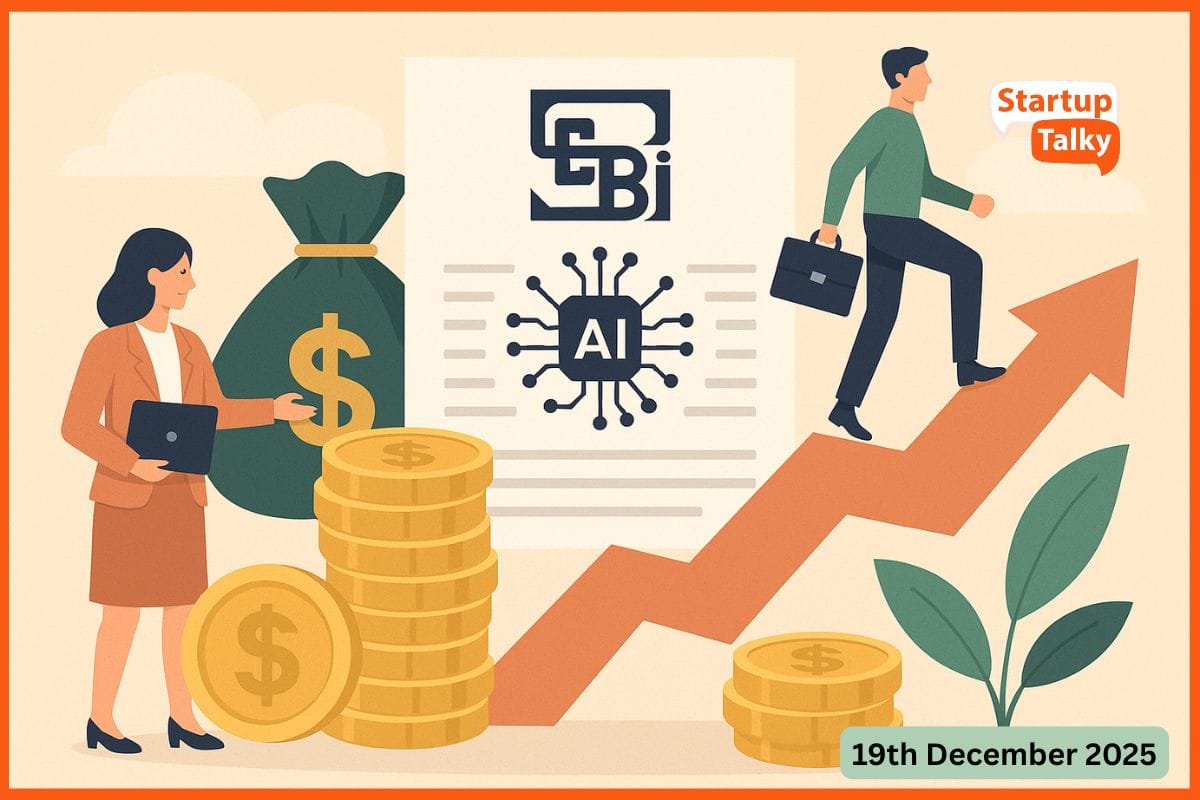For ONDC, Party's Just Started, Seen Taking Off In 2-3 Years
🔍Insights
The Indian government’s initiative to make eCommerce accessible to every pin code in the country has resulted in the Open Network for Digital Commerce. Since then, ONDC has been touted as the next UPI (Unified Payments Interface) for eCommerce transactions. A one-stop online shopping web for buyers and sellers to transact with complete price transparency. It has rightly created the buzz to take eCommerce to the next level in India.
Already, ONDC is showing signs of buzzing activity. In the festive week leading up to Diwali, ONDC recorded almost 1.2 million transactions across 600 cities! In November itself, transaction value spiked to 4.7 million.
The big question, however, is whether ONDC will have enough muscle power to replace the shopping experience on huge aggregator platforms such as Amazon and Flipkart.
ONDC has only taken baby steps, experts opine.
"ONDC is in its early growth stage. But we are hopeful that it will start peaking in the next 2–3 years,” said Aashish Guglani, senior policy associate at the Digital India Foundation.
In this article, we take a closer look at how ONDC is expected to transform the shopping experience and what room for improvement some participants see within the ONDC universe.
India’s Shopping Spree
ONDC Network
Retail Boom
Buzzing B2B
Room for Improvement
India’s Shopping Spree
From the word go, ONDC’s potential has been promising, given the sharp rise in online transactions by Indians.
The open network protocol is expected to act as a force multiplier for various segments—businesses, consumers, application developers, governments, and other relevant participants—through the creation of an interoperable and open playground for various sections to function and compete, ONDC said in a note when it announced the launch.
According to ONDC, India has the third-largest online shopping market, with 14 crore eRetail shoppers in 2020. Despite the large base, the eRetail penetration level is only 4.3%, compared with 25% in China and 26% in South Korea. This goes to show the untapped potential for eCommerce in India.
The COVID-19 pandemic forced people to shop online. Slowly but surely, Indian shoppers have now started digging their heels into the online shopping experience. The sudden boom in UPI payments only made shopping a seamless experience.
ONDC is trying to replicate the UPI experience in the eCommerce space by offering a more transparent framework.
McKinsey expects India’s digital commerce with ONDC to surge five times to around $340 billion by 2030.
With aggregator platforms reportedly charging commissions of 23-25%, ONDC does look attractive as of now. According to media reports, ONDC could start charging a small fee from participating platforms going forward in the range of 2–3%. As of now, seller network participants on the ONDC network may charge a marginal fee to the buyer. Even with these charges, the buyer has the choice to pick a seller based on their pricing points.

ONDC Network
ONDC offers a network for buyers and sellers. Consider it to be a digital land parcel hosting a township of malls, where buyers and sellers meet and transact their goods and services. As of now, some of the sellers on the platform range from food delivery apps to retail giants, small retail stores, and electronic stores, among others.
When it comes to the ONDC platform, the more, the merrier. The higher the number of participants, the greater the price discovery. As of now, ONDC hinges on buyers' and sellers' apps to route customers onto the network.
- Buyer Apps/Seller Apps: For example, Paytm, Mystore, Craftsvilla, and Yatri are some of the buyer applications that allow customers to access the ONDC network through their respective apps. Similarly, there are seller-side apps that allow the onboarding of customers, including Magicpin, Bitsila, Growth Falcons, uEngage, and Mystore.
- Gateways: Gateways are applications that aid the discoverability of goods and services for the buyer based on his or her search request and location.
Retail Boom
As of now, a chunk of Indian shoppers prefer to buy products from offline outlets. The Kirana store, infamously termed a 'mom-and-pop' store, forms 80% of India’s retail sector. Getting smaller retailers onboard the ONDC network is vital for its success.
Realizing the massive potential of ONDC, retail giants are doing their bit to onboard smaller retail outlets. India’s largest retailer, Hindustan Unilever, reportedly plans to help onboard around 1.3 million Kirana stores, which directly purchase from the giant.
Meanwhile, some companies from other sectors, such as electronics, are in a wait-and-watch mode.
We will get onboarded when we see a large part of our customers themselves upgrading and taking up this platform. As of now, we are just waiting and watching how this pans out. It seems promising on paper, but let's see how it gets picked up in our industry, said Ujjwal Sarin, founder of audio electronics company Nu Republic.
Increased traffic on the ONDC platform holds the key for participants to reach a fair price discovery. Placeorder.com founder and CEO Thomson Skariah says it's important for businesses to be available on the ONDC network to begin with.
“It's about businesses being available on the network to receive orders. You need to make sure that you know this is one more revenue channel for you,” Skariah said.
Digital India’s Guglani says, “If the stakeholder and the market ecosystem come in, ONDC will be able to reach $500 million as UPI did.”
Buzzing B2B
In contrast to the wariness witnessed in the business-to-consumer segment, the business-to-business segment seems to be buzzing with excitement.
In June of this year, ONDC launched the B2B trade on its platform, which allowed merchants to transact with other businesses and undertake wholesale transactions. This is likely to be a game-changer for businesses going forward.
With the launch of B2B on ONDC, brands can establish connections with retailers or facilitate their distributors' entry into new markets. With “plug and play” capabilities (such as real-time ordering, swift delivery, and credit management) offered by eco-system participants, ONDC will enhance the experience for both brands and retailers, said Sathish Gopalaiah, President, Consulting, Deloitte South Asia, in a press release.
“Retailers (such as grocery stores and pharmacies) could access a wider distribution network, saving time and costs. Direct linkages between retailers and manufacturers would be likely to cut prices, improving margins in sectors such as agriculture and construction,” said a McKinsey report.
Some experts hope that the network could also provide the elusive answer to questions about access to credit. The Open Credit Enablement Network, like the ONDC, is part of the India Stack of digital infrastructure envisaged by the government of India.
“Right now, with open credit, because everything will be catalogued, you are digitized. I would like to know what kind of sale you have in a month; we would have that kind of information collateral. Therefore, it becomes easier, cheaper, and less risky for a bank to give you a loan,” Guglani said.
Room for Improvement
Although the advantages seem to outweigh the risks at the moment for ONDC, the scope for improvement has nevertheless been expressed by experts.
Customer Service
The Digital India Foundation has named three key risks to ONDC, namely: access and ownership of data, customer service, and evolving roles and responsibilities. It has pegged the risk of the absence of clarity over customer service at 74%.
“Most of those associated with ONDC claimed to have faced no problem while onboarding, though few wished the process could be faster and the customer care segment more responsive,” said a survey released by Shiprocket on ONDC in August.
Data Privacy
Data privacy is also a concern shared by a few participants. At the very outset, ONDC has made it clear that it will not be storing or viewing any transaction data. Despite these assurances, data phishing continues to remain a risk.
“The government and ONDC are facilitating e-commerce. But, with so many people handling online transactions, their data could be misused by people with technical knowledge,” said Dr. Himanshu Talwar, executive board member of the Young Leaders Council (YLC) Executive Board Member - Young Leaders Council, under the All India Management Association.
User Experience
ONDC will have to put up an experience that remains on par with, if not exceeds, global standards.
“ONDC's main challenge is to match the platform's technological viability with the increasing number of transactions and clients. It needs to compete with some of the finest apps in the world, like Amazon, Flipkart, and Uber. There's growing pressure on ONDC to keep up with the latest mobile apps and meet customer demand,” said the International Journal of Engineering & Technology in its research note.
Conclusion
Like any digital innovation, ONDC too may overcome its initial technical hiccups and upgrade with better versions going ahead. Going by the steady rise in the number of transactions on the platform, it's only a matter of time before ONDC can become the big disruptor in India’s gargantuan eCommerce space.

Must have tools for startups - Recommended by StartupTalky
- Convert Visitors into Leads- SeizeLead
- Website Builder SquareSpace
- Manage your business Smoothly Google Business Suite







